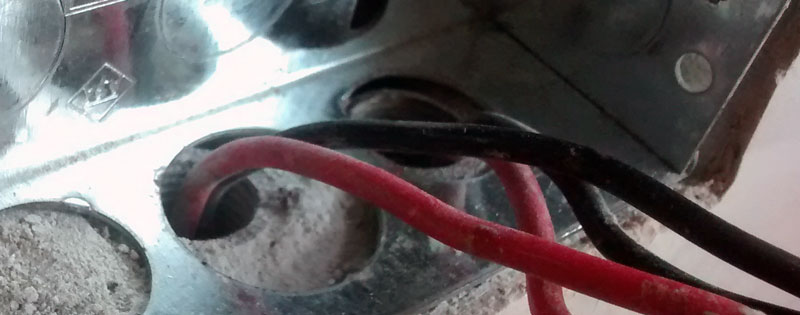Hi folks,
Read the wiki and searched the net, but can't find an answer to the following.
As part of room renovation I'm swapping a single socket outlet for a double.
Our flat is 1970's vintage and there's no separate CPC in the ring (just black and red wires, and each socket face plate's earth connector is simply wired to the back box) so I think the earth is provided via the steel conduit itself? From what I've read this is no longer considered good practice, but unfortunately I don't have the budget to rewire right now.
Problem I have is as below - the gap between the conduit ends doesn't fit the knockouts in the new double pattress.

I don't much fancy filling the hole in and going back to a single socket. If one of the conduit sections is not screwed to the back box (via the original brass glands) am I correct in thinking the sockets further round will still have an earth connection, but there won't be a continuous CPC right the way round the ring, which in turn could create a dangerous situation if another break in the CPC were to happen in future?
Read the wiki and searched the net, but can't find an answer to the following.
As part of room renovation I'm swapping a single socket outlet for a double.
Our flat is 1970's vintage and there's no separate CPC in the ring (just black and red wires, and each socket face plate's earth connector is simply wired to the back box) so I think the earth is provided via the steel conduit itself? From what I've read this is no longer considered good practice, but unfortunately I don't have the budget to rewire right now.
Problem I have is as below - the gap between the conduit ends doesn't fit the knockouts in the new double pattress.

I don't much fancy filling the hole in and going back to a single socket. If one of the conduit sections is not screwed to the back box (via the original brass glands) am I correct in thinking the sockets further round will still have an earth connection, but there won't be a continuous CPC right the way round the ring, which in turn could create a dangerous situation if another break in the CPC were to happen in future?




